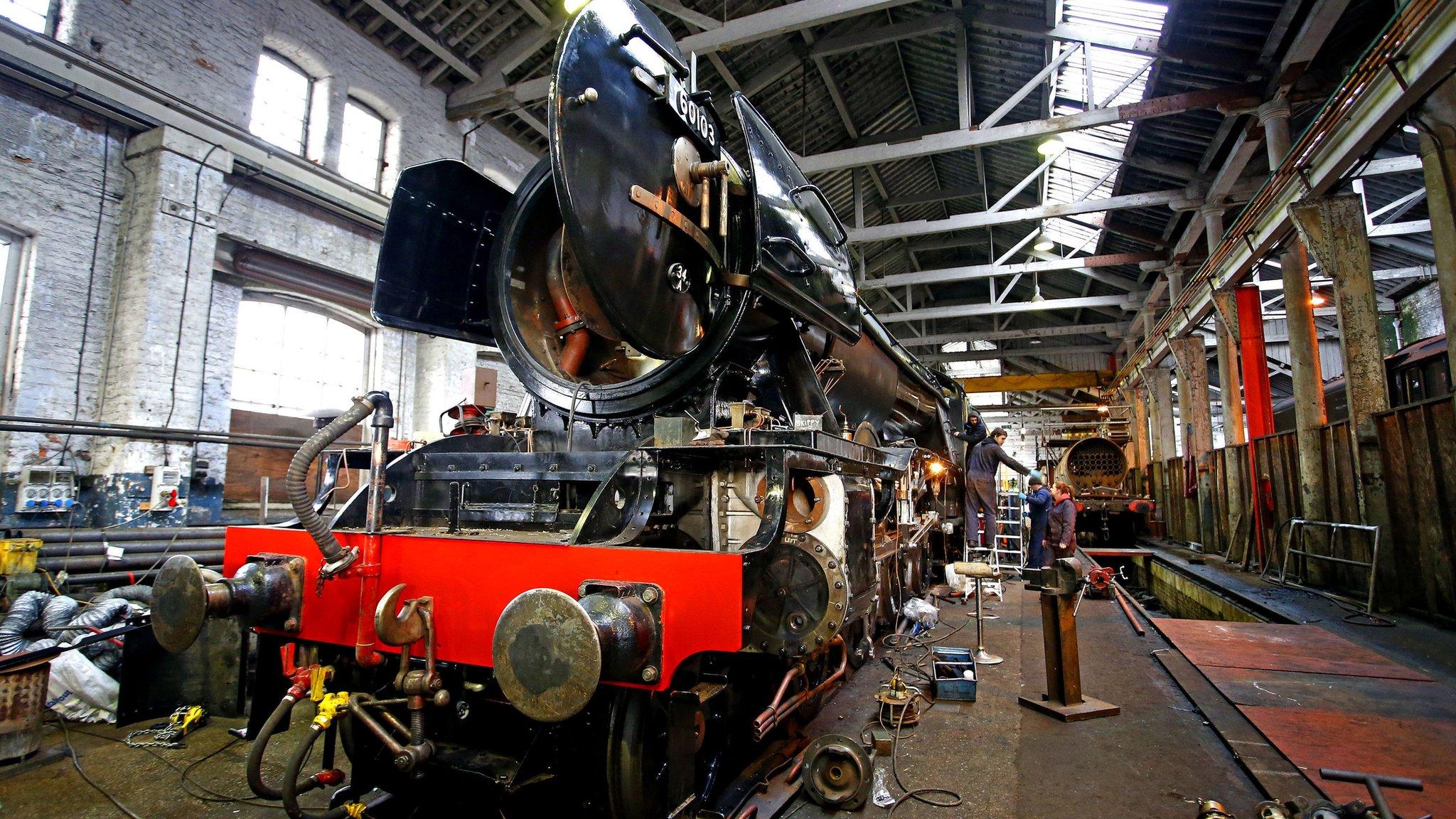Flying Scotsman on London King's Cross to York run
- Published
Aerial footage shows the locomotive racing north on its way to York, where crowds greeted the train
One of the world's most famous locomotives has completed its inaugural run after a decade-long, £4.2m refit.
The Flying Scotsman made the journey from London King's Cross to York, where it will go on display at the National Railway Museum (NRM).
It arrived in York about 13.20 GMT, almost an hour later than expected, after it was twice held up by reports of trespassers.
The engine, which retired from service in 1963, has been restored for the NRM.
As it happened: The Flying Scotsman's journey
Former MP turned TV presenter Michael Portillo said: "This is certainly the most famous journey and most famous locomotive in Britain."
Video courtesy of Ryan Allen

The Flying Scotsman passed over the Digswell Viaduct near Welwyn Garden City on its inaugural run from London to York

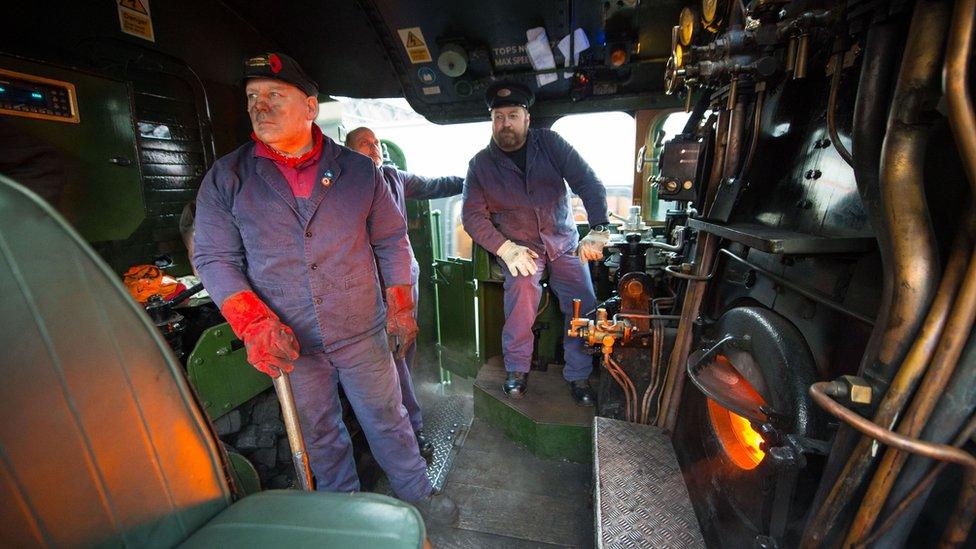
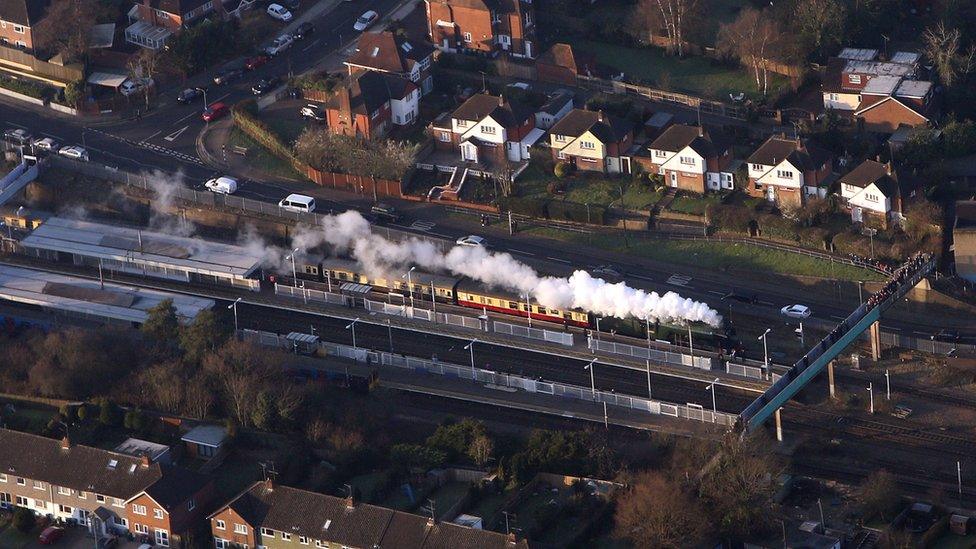
Flying Scotsman passing through Potters Bar
The first disruption happened at about 09:00 near St Neots when the train was brought to a standstill while British Transport Police cleared the lines after reports of around 60 people on the track. No arrests were made.
Network Rail said the number of people on the trackside had caused "safety concerns" and resulted in a number of services, including Flying Scotsman, having to slow down."
The train was halted a second time north of Doncaster following reports of trespassers on the track which were later found to be false.
Flying Scotsman: Guard shouts at trespassers as train halted near St Neots

The locomotive's journey was halted for about five minutes by people trying to see the Flying Scotsman
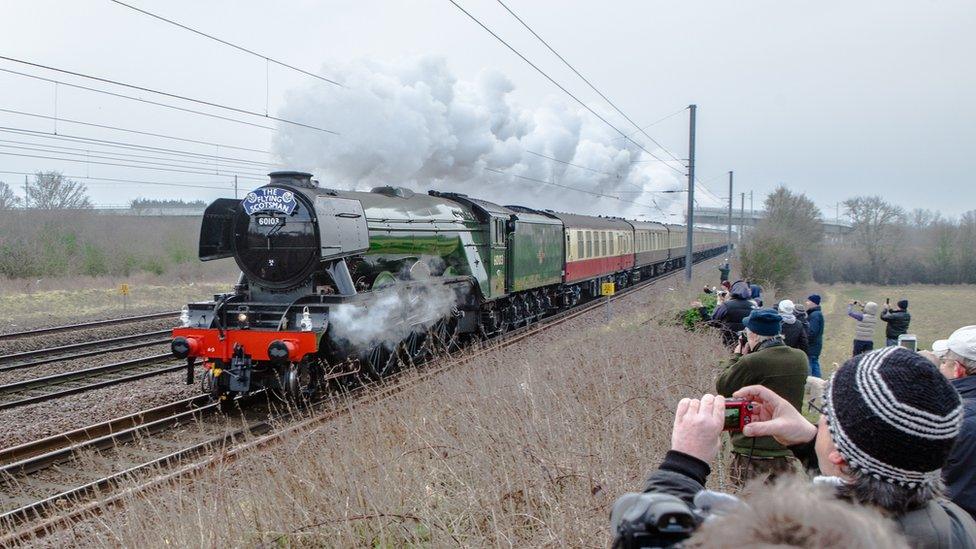
Crowds gathered at King's Cross for its scheduled departure at 07:40 and thousands lined the route, while some of the 297 passengers paid up to £450 for a ticket to travel on the train.
Among the passengers was 83-year-old Ron Kennedy, from Leigh-on-Sea, in Essex, who drove Flying Scotsman from 1956 until it was retired in 1963.
He said "It's unbelievable. I never dreamt about being on it again. To be out with it is just fantastic."

Huge crowds gathered at York station to see the locomotive arrive

The Flying Scotsman left King's Cross at 07:40 GMT to begin its journey to York
NRM director, Paul Kirkman, said the restoration project was a "long old journey" but added that it was "incredibly satisfying" to see the locomotive returned to service.
The locomotive undertook a series of test runs through Cumbria and Lancashire earlier this year.

Flying Scotsman
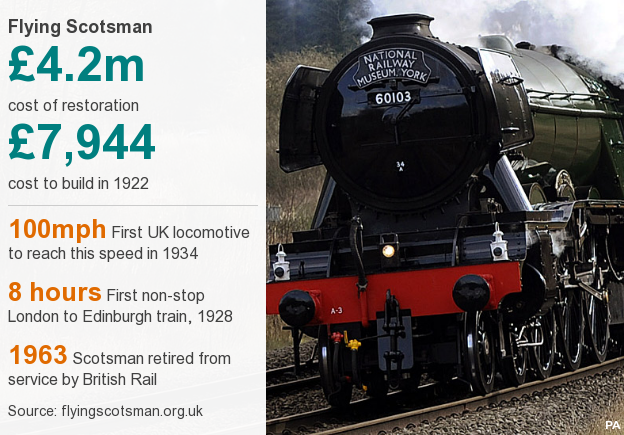
Designed by Sir Nigel Gresley, Flying Scotsman emerged from Doncaster Works on 24 February 1923
The British Empire Exhibition in 1924 made Flying Scotsman famous
In 1934, Scotsman was clocked at 100mph - officially the first locomotive to have reached that speed. But some claim City of Truro was the first steam engine to break the 100mph record, in 1904, when it apparently reached a speed of 102mph running down a slope
It is 70ft (21m) long, weighs about 96 tonnes and had a top speed of 100mph
It has travelled approximately 2,500,000 miles
During World War Two it was repainted wartime black
By 1995 it was part-owned by record producer Pete Waterman
The engine was bought for the nation in 2004 by the National Railway Museum (NRM) in York using £415,000 in public donations, a £365,000 gift from Sir Richard Branson and a £1.8m grant from the National Heritage Memorial Fund


The famous locomotive was painted in its traditional green livery last week, marking the end of a decade-long restoration project
- Published17 February 2016

- Published7 February 2016
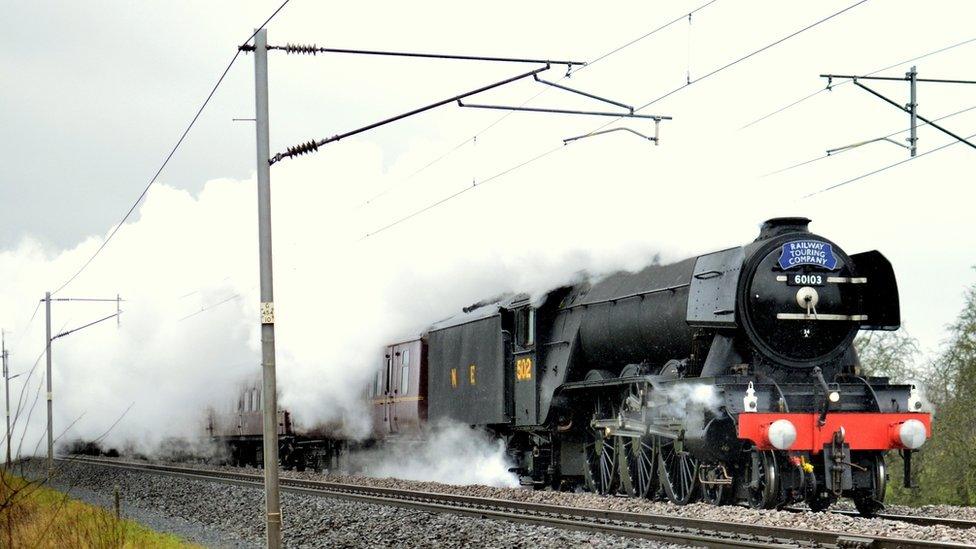
- Published7 February 2016
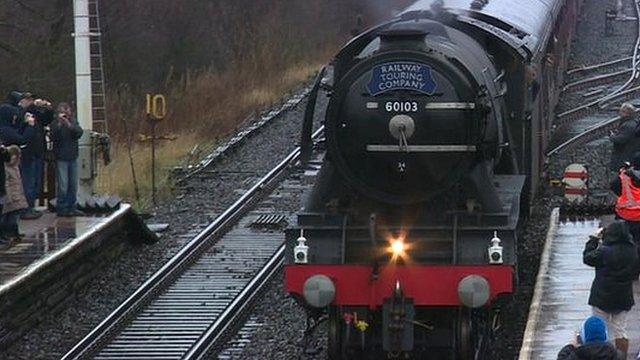
- Published6 February 2016

- Published6 February 2016
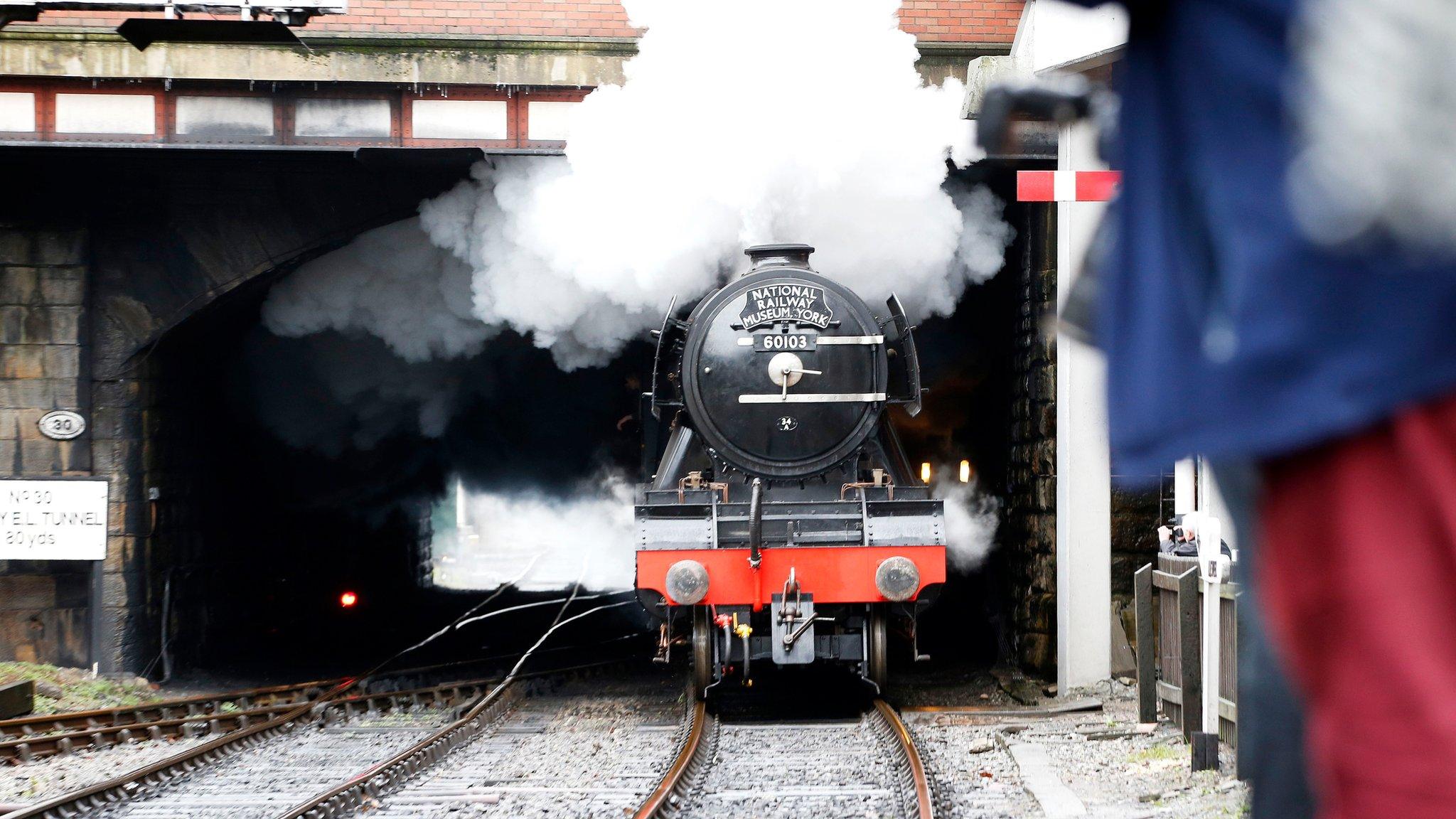
- Published8 January 2016
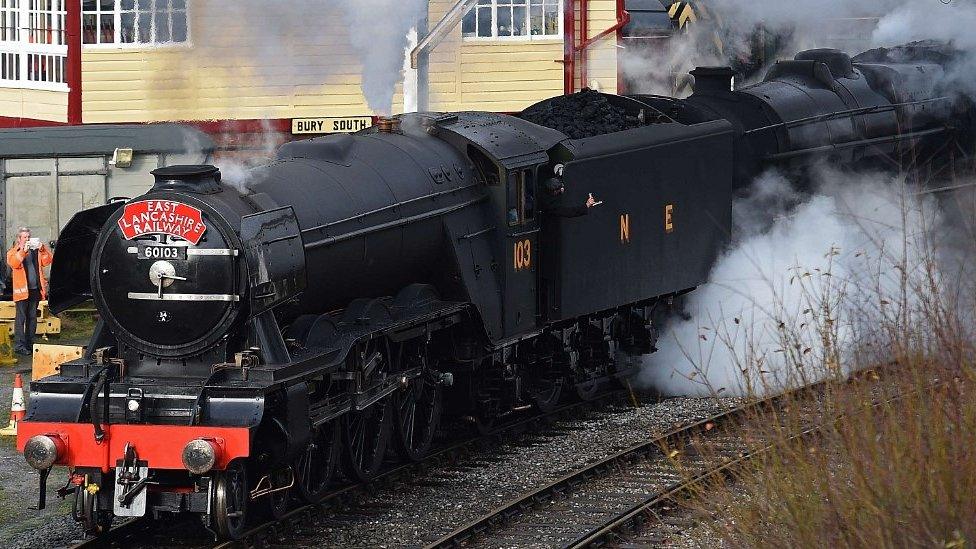
- Published8 January 2016

- Published8 January 2016
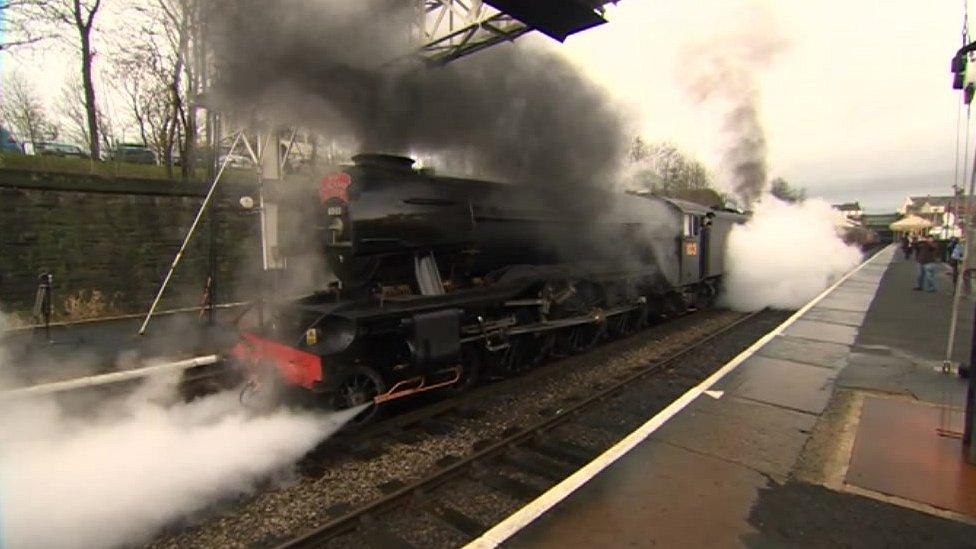
- Published5 January 2016
